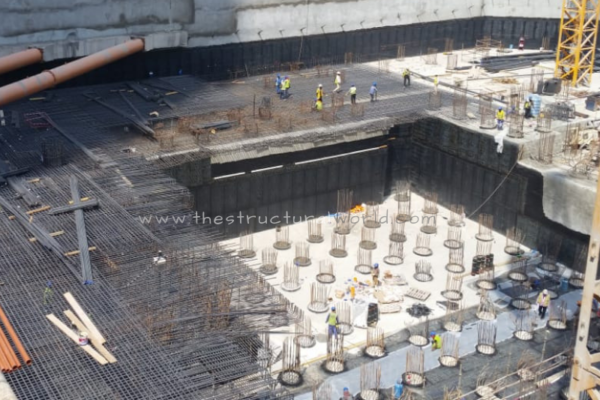


It is estimated that only 10 percent or less of an earthquake's total energy is radiated as seismic energy. This process of gradual build-up of strain and stress punctuated by occasional sudden earthquake failure is referred to as the elastic-rebound theory. This energy is released as a combination of radiated elastic strain seismic waves, frictional heating of the fault surface, and cracking of the rock, thus causing an earthquake. This continues until the stress has risen sufficiently to break through the asperity, suddenly allowing sliding over the locked portion of the fault, releasing the stored energy. Once the fault has locked, continued relative motion between the plates leads to increasing stress and, therefore, stored strain energy in the volume around the fault surface. Most fault surfaces do have such asperities, which leads to a form of stick-slip behavior. The sides of a fault move past each other smoothly and aseismically only if there are no irregularities or asperities along the fault surface that increase the frictional resistance. Tectonic earthquakes occur anywhere in the earth where there is sufficient stored elastic strain energy to drive fracture propagation along a fault plane.

The epicenter is the point at ground level directly above the hypocenter. An earthquake's point of initial rupture is called its hypocenter or focus. Earthquakes are caused mostly by rupture of geological faults but also by other events such as volcanic activity, landslides, mine blasts, and nuclear tests.

In its most general sense, the word earthquake is used to describe any seismic event-whether natural or caused by humans-that generates seismic waves. When the epicenter of a large earthquake is located offshore, the seabed may be displaced sufficiently to cause a tsunami. The word tremor is also used for non-earthquake seismic rumbling.Īt the Earth's surface, earthquakes manifest themselves by shaking and displacing or disrupting the ground. The seismicity at a particular location in the Earth is the average rate of seismic energy release per unit volume. The seismic activity of an area is the frequency, type, and size of earthquakes experienced over a particular time period. Earthquakes can range in intensity, from those that are so weak that they cannot be felt, to those violent enough to propel objects and people into the air and wreak destruction across entire cities. An earthquake (also known as a quake, tremor or temblor) is the shaking of the surface of the Earth resulting from a sudden release of energy in the Earth's lithosphere that creates seismic waves.


 0 kommentar(er)
0 kommentar(er)
